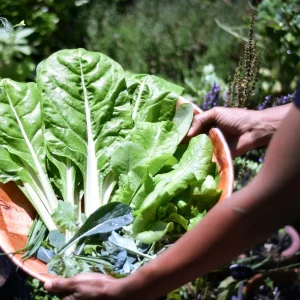Welcome to the world of sustainable living! In this guide, we’ll explore the beauty of DIY off-grid water systems and how you can harness the power of rainwater to reduce your environmental footprint and live more independently.
Facts
- Rainwater is naturally soft and free from harmful chemicals, making it ideal for various household uses.
- According to the EPA, a 1,000 square foot roof can collect around 600 gallons of water from just one inch of rainfall.
- Harvesting rainwater can significantly reduce your reliance on municipal water sources and lower your water bills.
| Nutrient | Benefit |
| Fresh Water | Essential for hydration |
| Oxygen | Vital for human survival |
| Trace Minerals | Support overall health and wellness |
Steps to Harvest Rainwater
- Assess Your Roof: Determine the surface area of your roof that can be used for rainwater collection. Clean the roof to remove any debris or contaminants.
- Install Gutters and Downspouts: Properly install gutters and downspouts to direct rainwater into your collection system. Ensure they are securely attached and free from leaks.
- Choose a Collection Method: Decide on a collection method that suits your needs and budget. Options include rain barrels, cisterns, or underground tanks.
- Install a Filtration System: Install a filtration system to remove debris, sediment, and contaminants from the collected rainwater. This ensures the water is safe for use in your home.
- Add a Pump (Optional): If you plan to use the harvested rainwater for irrigation or indoor plumbing, consider adding a pump to increase water pressure.
- Connect to Your Home: Connect your collection system to your home’s plumbing system, ensuring proper seals and connections to prevent leaks.
- Regular Maintenance: Regularly inspect and maintain your system to ensure optimal performance. Clean filters, check for leaks, and monitor water quality.
Beyond the Basics
Now that you’ve got the basics down, let’s dive a little deeper into the world of DIY off-grid water systems. One of the great things about these systems is their versatility. You can customize them to fit your specific needs and preferences.
For example, if you’re an avid gardener, you might want to invest in a larger collection tank to ensure you have enough water for all your plants, especially during dry spells. Or, if you live in an area with strict water restrictions, you might opt for a system that includes a sophisticated filtration system to ensure your water is safe for drinking.
Another consideration is aesthetics. Some people prefer a more discreet setup, with underground tanks or hidden collection barrels, while others see their water system as an opportunity to showcase their environmental commitment with beautifully designed rain barrels or cisterns.
It’s also worth mentioning the satisfaction that comes from knowing you’re doing your part to conserve water and reduce your environmental impact. Every drop of rainwater you collect is a drop that doesn’t need to be pumped from underground aquifers or diverted from rivers and streams.
So, whether you’re motivated by saving money, reducing your carbon footprint, or simply embracing a more self-sufficient lifestyle, creating a DIY off-grid water system is a rewarding endeavor that will benefit both you and the planet.
Keep exploring, experimenting, and learning as you embark on your journey to sustainable living. And remember, every small step you take makes a difference!
Conclusion
Congratulations! You’ve taken a significant step towards sustainable living by creating your DIY off-grid water system. By harvesting rainwater, you’re not only reducing your environmental impact but also gaining more control over your water supply. Embrace the freedom and independence that comes with sustainable living!
FAQs
Is rainwater safe to drink?
While rainwater is generally safe for non-potable uses, it’s recommended to treat it before drinking to remove potential contaminants.
How much does a DIY off-grid water system cost?
Costs vary depending on the size and complexity of the system. However, many DIY enthusiasts find that the long-term savings on water bills outweigh the initial investment.
Start your journey to sustainable living today with a DIY off-grid water system!




